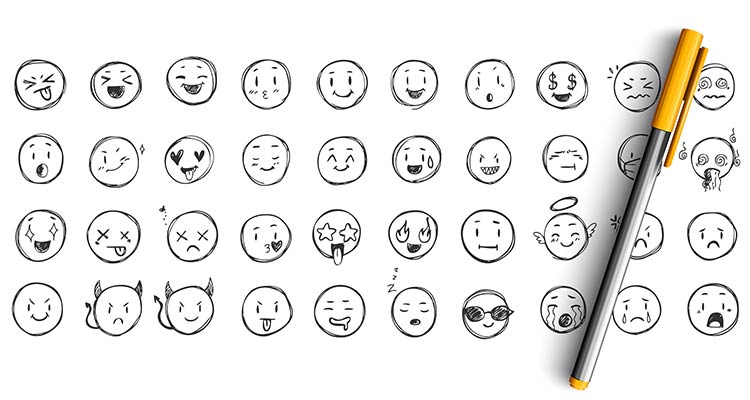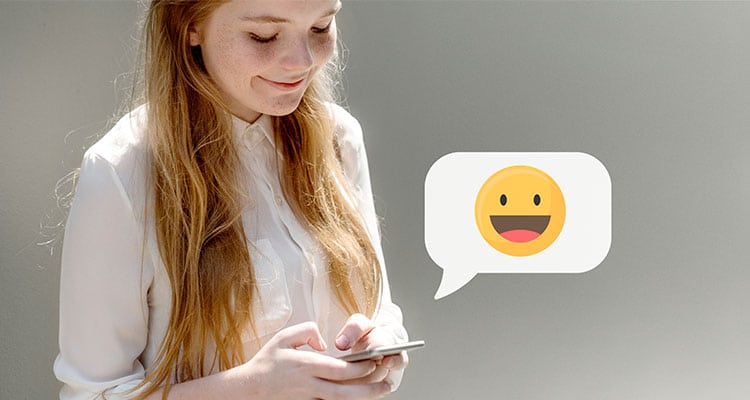What we know as emojis today were rock paintings on archaeological sites in ancient civilizations. Drawings or carvings were made to convey meanings, to tell a story, only to be found under heaps of gravel much later. It was a means of communication without having to use letters (letters were not invented back then, but you get the point). It’s World Emoji Day, so let’s talk about them a little more. Emojis have come to be treated as more than just drawings; an emoji conveys emotions, feelings, with just one tap of your finger. Instead of typing letters, thoughts can be conveyed with one simple emoji. But, emojis are so much more than that. They aren’t just millennial whims. They aren’t short-lived. Each emoji is crafted to suit the delicate needs of a broad range of users – adults, teenagers, old, straight, gays, transgender, white, black, Indians and more.
The History Of Emojis
For the first time in Oxford’s history, the Word of the Year was a pictograph, an emoji. In 2015, the emoji with “Face with tears of joy” was Oxford Dictionary’s Word of the Year. Perhaps, this was the most used emoji in the world! In this day and age of millennial relationships, emojis play a huge role! But how did these emojis come into being? On World Emoji Day, let’s trace the evolution and history of emojis. Emojis began as a discovered ingenuity by Japanese artist Shigetaka Kurita. He was the curator of almost 180 emojis back in 1999 for “i-mode”, an early internet provider from DOCOMO, Japan’s prominent mobile carrier. The popularity of Kurita’s emojis soon spread its wings. Fast forward to 2010, Unicode Consortium standardized the symbols in digital interfaces and is responsible for the emojis across all interfaces and smartphones that we find today. The adaptation and unification of emojis across countries provided a solid exchange of information, with no language barrier. Kurita’s emojis were meant to convey information without having to type out too many words. The first edition of emojis had several options to convey the weather (snow, sun, umbrella, etc.), traffic and technology and the phases of the moon. With Unicode’s involvement, the original version was increased to almost 650 emojis to be used across all digital platforms. The lexicon of emoji was changing, and Unicode had means and ideas to make the emojis more available to the masses. Their job was to help expand and express with these graphic creations which were becoming too hard to ignore. Emojis were on the way to becoming legitimized as a language of their own.
Emojis became a staple for all
It was only after 2010 that emojis began being used around the globe, popularized as Android and Apple jumped into the market to devise emojis of their own. The variety of emojis -like the broken heart emoji to innuendo-laden eggplant emoji – became a part of everyday conversation. Hello, emojis, and goodbye texting anxiety! The POC had no representative emoji as every emoji appeared to be white. There was sushi emoji, but no other cultural cuisines like tacos, curry or enchiladas, and the ‘couple with heart’ emoji represented a straight couple.
Emojis became digital acknowledgment of culture
Emoji underwent a major change in 2014 during the Great Emoji Politicization. They were no longer seen as just a means of exchange of information but a representation of varied cultures around the globe. It became a digital acknowledgment of cultures. Unicode diversified the emoticons in 2015 by adding options to change the skin tone up to six shades, adding varied people of varied genders with varied occupations and professions, doing varied things – women cycling, emoji with turbans and hijabs, and the most recent, the gender-neutral emoji.
How many emojis are sent out every day?
Over 5 billion emojis are sent over every day. The year 2018 celebrated the emoji when Apple launched new ones to include more people in their list like redheads, a mango, kangaroo, lobster, etc. Since an emoji is a parcel of life, World Emoji Day is celebrated every year on July 17. The ‘17th July calendar’ emoji has its place in the long list of emojis. The unofficial celebration of emoji was the brainchild of Emojipedia (Like Wikipedia for emojis) which was started in 2014. Since then, carpet events, activities and gatherings are planned every year to celebrate it and have a happy emoji day. New York’s Empire State Building was lit with ‘emoji yellow’ in 2017 in honor of World Emoji Day. In Dubai, people gather dressed up as emojis to celebrate International Emoji Day.
World Emoji Day activities you can try
Converse only with emojis – One emoji replies rule the dayGo baking. There’s nothing cuter than turning little emojis into baked items. If you are creative, try different colored frosting to make the little ‘hearts on eyes’ emoticon. And if you’re feeling really experimental, how about the poop emojiTake an emoji, make it into a song. Send songs using different emojis only. Let your friends guess the tracksTurn your own photos into an emojiFind that emoji T-shirt that has been lying in the corner of the wardrobeTry out having an emoji day at your workplace. It will be a lot of fun
I guess every minute we use an emoji to express ourselves over text. We cannot imagine life without that smiley that goes at the bottom of our text every time we press send. On International Emoji Day, let’s acknowledge these helpful little graphics that make our spaces a little more fun.




![]()